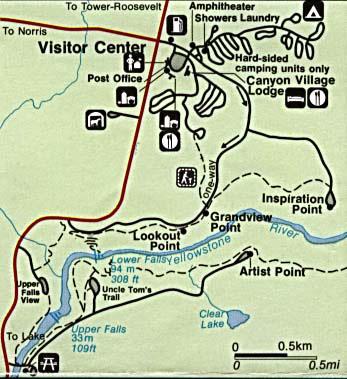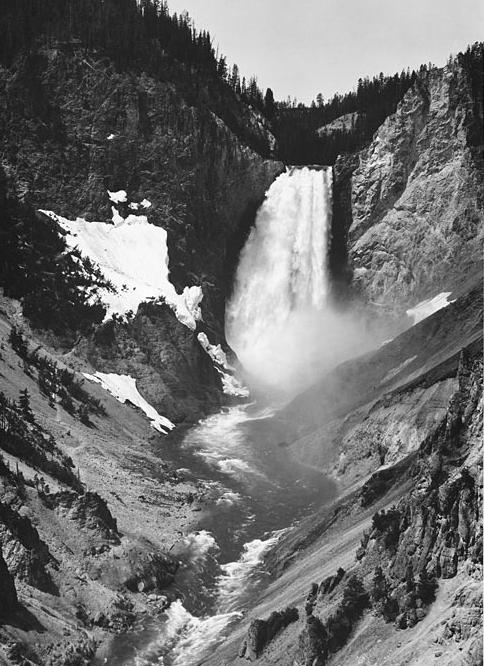
2 minute read
Canyon Village
from 50 Iterations
by saraholick

GRAND CANYON OF THE YELLOWSTONE
Advertisement
The Grand Canyon of the Yellowstone is roughly 20 miles long, measured from the Upper Falls to the Tower Fall area. The canyon was formed by erosion as Yellowstone River flowed over progressively softer, less resistant rock.
The 109-foot (33.2-m) Upper Falls is upstream of the Lower Falls and can be seen from the Brink of the Upper Falls Trail and from Upper Falls Viewpoints. The 308-foot (93.9-m) Lower Falls can be seen from Lookout Point, Red Rock Point, Artist Point, Brink of the Lower Falls Trail, and from various points on the South Rim Trail. The volume of water flowing over the falls can vary from 63,500 gallons (240,374 l)/second at peak runoff in the spring to 5,000 gallons (18,927 l)/second in the autumn.
A third falls is located in the canyon between the Upper and Lower falls. Cascade Creek cascades into the canyon as Crystal Falls. It can be seen from the South Rim Trail just east of the Upper Falls Viewpoints area.

MOUNT WASHBURN
With a peak elevation of 10,219 feet (3,115 m) and panoramic views for about 20 to 50 miles (32 to 80 km), Mount Washburn is a popular day-hiking destinations. It is located just a few miles north of Canyon Village. Mount Washburn is the remnant of volcanic activity that took place long before the formation of the present canyon and named for General Henry Washburn, leader of the 1870 Washburn-Langford-Doane Expedition.
At the top, check out interpretive exhibits inside the base of a fire lookout and enjoy the view (you can also watch views from Mount Washburn from two webcams).
In addition to being a popular hiking destination, Mount Washburn is one of three fire lookout stations in Yellowstone. It is staffed from mid-June until the fire season ends, during which time the staff watch for signs of fire.

HAYDEN VALLEY
Hayden Valley is a great place to view wildlife. Grizzly bears may be seen in the spring and early summer preying upon newborn bison and elk calves. Bison are often seen in the spring all the way through the fall rut. Coyotes and foxes are often seen in the valley. Ducks, geese, and American white pelicans cruise the river, while a variety of shore birds may be seen in the mud flats at Alum Creek. Keep an eye out for bald eagles, northern harriers, and sandhill cranes.











